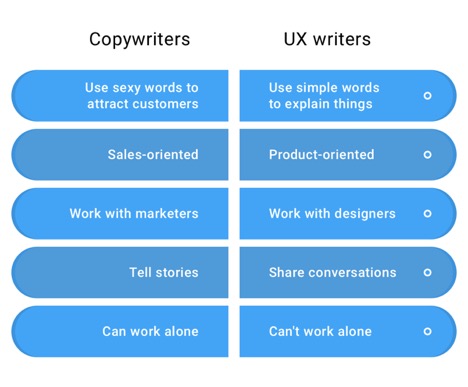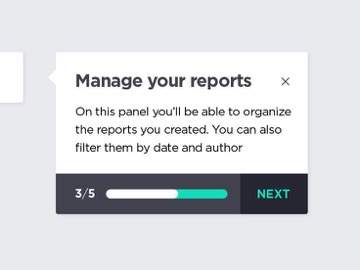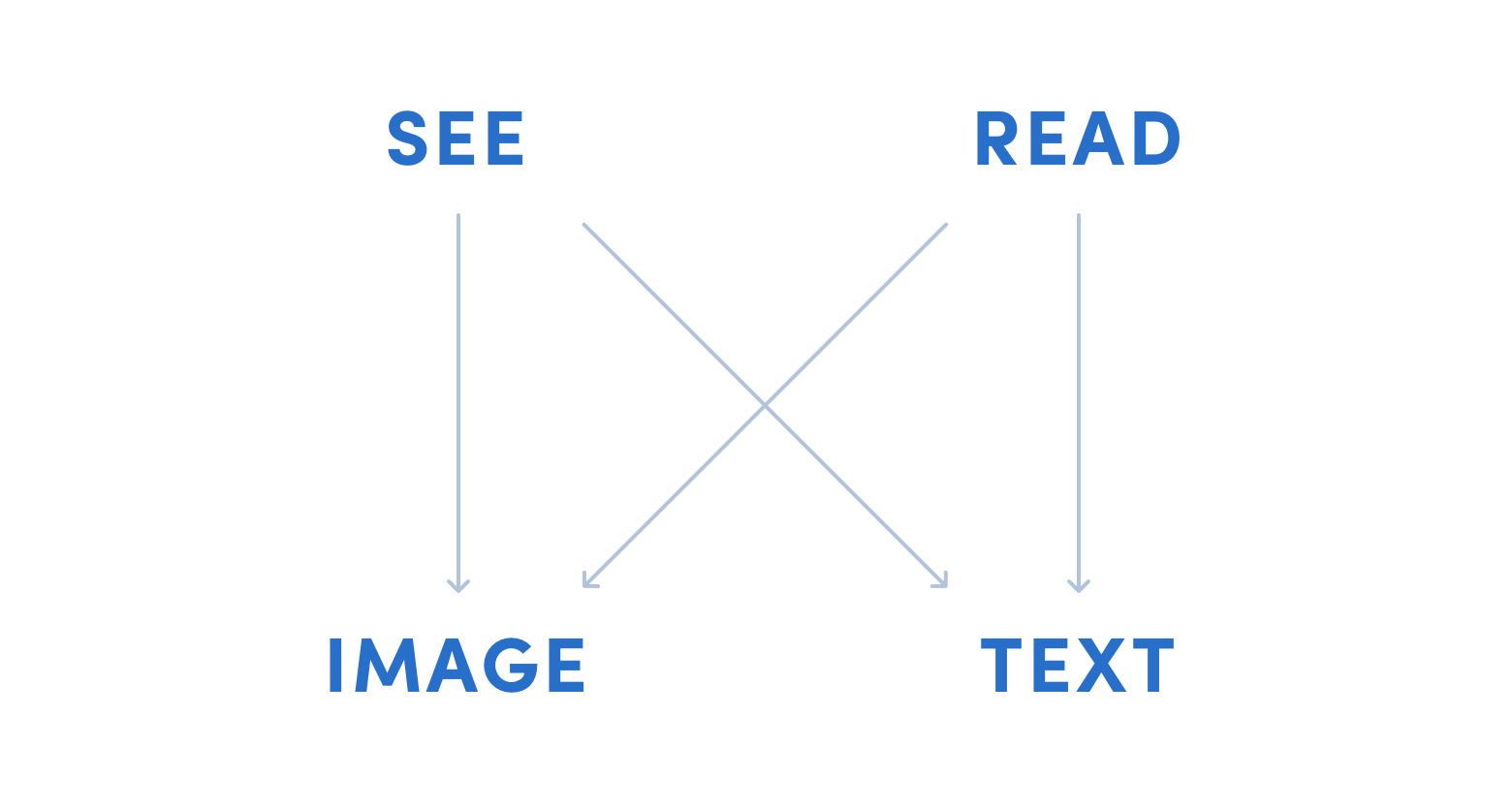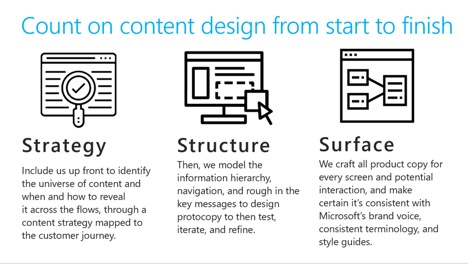No. 8: Writing for Meaningful Experiences

This is the eighth installment of our series on the 12 Competencies of UX Design.
Think back to the last time you used Waze or Google Maps to drive to an unfamiliar location. Once you clicked “start”, what words did you hear or see? How did those messages help you navigate the road in front of you? How many times did you have to look down at the map to figure out what to do next?
You might not have known it, but as you were listening to your phone chirp directions like “turn left” or “stay in the right lane,” you were experiencing firsthand the impact of great UX writing.
Whereas previous generations would have had to consult a visual map to determine which roads would lead to their destination, you simply had to listen to instructions built into your navigation app. Those instructions were so good and so clear that you rarely — if ever — had to glance down at your phone.
This is the goal of UX writing. While well organized, beautiful, visually appealing design of a user interface is certainly important in UX, nothing can fully replace the impact of great writing when it comes to helping a user achieve a particular goal (including getting to a new driving destination safely).
In this post, we’ll explore one of the most undervalued and misunderstood elements of UX design: UX writing.
"Making business tools that customers love hinges on crisp simplicity: Bigger ideas and fewer words. More heart, less head — and a voice that's more conversational and human." - Kylie Hansen, Microsoft
What is UX Writing?
One of the most common misconceptions about UX writing is that it is synonymous with copywriting. Inexperienced professionals and designers may also assume that any capable marketing copywriter can also create great product copy.
However, while some copywriters are also skilled UX writers, the purpose of copywriting is entirely different from UX writing. To understand what UX writing is, let’s first look at the different types of writing in the digital landscape:
-
Copywriting: This is persuasive brand and marketing writing that highlights differentiators and creates brand value in the eyes of the consumer. It’s designed to convince and convert.
-
Instructional Writing: Instruction writing provides concise instructions about how to do something. It’s clear and without the “frills” of traditional ad or copywriting.
-
Educational Writing: Educational writing teaches someone about a concept or idea. Educational writing is usually less goal-oriented than instructional writing and less persuasive than copywriting.
-
UX Writing: UX writing is the language that helps a user move through an experience without frustration or confusion and with comfort, delight and meaning. Sometimes called microcopy, certain UX writing is attached to specific navigation and interaction points.
 Source: UX Collective
Source: UX Collective
Great UX writing is baked into design — it should feel like a part of the workflow.
Examples of UX Writing
UX writing often includes copy for things like buttons, menu labels, error and success messages, form copy, terms and conditions, and disclaimers. Here are a few examples:



As a whole, it’s the role of a UX writer to answer questions like:
- What does the user need to know, what are they thinking and needing now?
- What should each screen, prompt and interaction point say?
- How will users work step by step through the interface so they can successfully accomplish their task?
- How will the brand’s personality come through in the experience and on the user interface?
- How will messages and meaning be expressed in as few words and characters as possible?
- How will the value of the product or service be reinforced at each step?
- How will this feature help a user complete a particular step in a workflow more easily?
Analyzing and Testing UX Writing
Unlike many types of copy or content, UX writing can be tested roughly the same way that UX design is tested. Whereas the quality of copywriting is largely subjective, high-quality UX writing is more measurable. It is only as good as how well it reduces friction and conveys the right meaning in the right moment while helping users achieve a particular goal.
As an example, at Drawbackwards, UX writing is often analyzed within moderated testing scenarios called “think aloud protocols.” In these scenarios, users say what they are thinking and feeling out loud while a moderator records their responses. In this scenario, the quality of UX writing is analyzed by asking questions like:
- Based on what you read, what do you intend to do next? Why?
- What do you expect to happen when you click?
- What do you hope will happen?
Some inexperienced designers and business leaders will often treat UX writing as the “finishing touch” or “decoration” within an interaction. That’s because they often feel that content can simply be “plugged in” to a wireframe or design once it’s been reviewed and approved by stakeholders.
This is a big mistake for a few reasons.
First, since great UX writing is often integral to a workflow and a user’s ability to move through it seamlessly, it’s virtually impossible to test an interaction of workflow without real UX copy.
Second, most end users don’t distinguish between UX writing and visual design when it comes to digital experiences. Instead, they “see” text and “read” images and vice versa — both are critical to conveying meaning to an end user.

Regardless of how visually appealing an experience is, if the copy doesn’t help the user move through a workflow successfully, beautiful design is all for nothing.
What Makes UX Writing Good?
Ultimately, the goal of UX writing is to inform and comfort users as they move through a workflow with as little friction as possible. As a general rule, UX writing should be:
- Clear
- Concise
- Easy to understand
- “Short and sharp” (no frills)
- Goal-oriented
- Consistent
UX writers must also use language that is familiar to a customer, which requires a deep understanding of a user’s context and an exceptional level of empathy.
 We believe UX writers should be a part of the design process from the very beginning, a bit like this. Source: Microsoft
We believe UX writers should be a part of the design process from the very beginning, a bit like this. Source: Microsoft
This is why UX writing is a critical UX competency, and why it is such a critical element in the design thinking process. If a UX writer has a very difficult time explaining or capturing an interaction’s purpose in a workflow, it is often a symptom of ineffective design rather than a failure on the part of the writer.
“Text problems often reveal design problems.” - Nick Babich
UX Writing: The Key to Ascending the User Experience Success Ladder
No matter how well a digital experience or interaction is designed, it will ultimately fail without equally effective UX writing. Great UX writing is the red thread that weaves together a workflow’s various interactions and helps users understand where they are and where they are going next.
For brands, truly great UX writing can often be the difference between a comfortable experience and a truly meaningful one. Brands that execute UX writing well are often able to make the leap from ‘brand jargon’ to ‘layman’s terms’ — taking terminology that’s intrinsically interwoven with a brand and injecting it into the cultural lexicon (it’s why we don’t say “search for it” — we say “google it”).
When UX writing deftly weaves business objectives and user goals together into a seamless experience, it has fulfilled its purpose within the design thinking process. Next time you set out to craft a game-changing digital experience for your customers, don’t forget to account for the importance of UX writing.